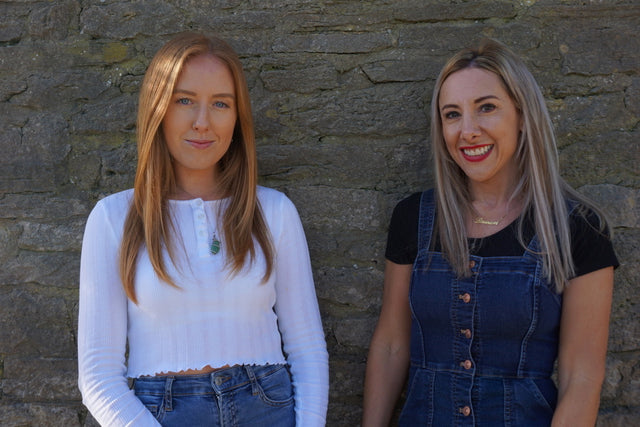UX and CRO - The Complete Picture
We wanted to share some very big news with you! It’s with much excitement that we introduce our new Experience Team at Media Lounge!
We believe that in order to obtain a complete picture of what is happening on a website, it is necessary to combine the disciplines of CRO and UX. CRO enables us to understand exactly what is happening on the site, whilst UX explores why it happens. And as a result, we believe these services are inextricably linked. With this combined insight, we can provide recommendations to enhance site conversions based upon valuable analytical data and real life user experiences.
What’s our approach to Conversion Rate Optimisation?
CRO Discovery:
To start our CRO discovery audit, all we need is access to a client’s website data.
Whether it be a new build or a takeover project, our first port of call is to look at the flow of traffic through the site, or the conversion flow. By analysing this, we can instantly identify the most important pages in the user journey as well as the biggest pain points on the site. These vital insights provide the basis for our CRO analysis. Any recommendations we propose will always be focused upon enhancing through flow rates and ultimately conversion.
It’s also very important for us to review the narrative at each key stage of the website. If there is a disconnect in the narrative from one stage to the next, the site can suffer high bounce and exit rates. This is often – and too easily – overlooked by those working closely to the site. We aim to ensure that there is continuity in site messaging, allowing for a more intuitive user journey.
Understanding how different users behave on the site is vital to improving conversion rate. For example, a young, returning user on mobile is likely to act completely differently from that of an older, new user on desktop. Audience segmentation analysis will differ from site to site and varies according to content. But generally speaking, we review performance by device category, user type (new vs returning) and demographics (age and gender).
Once we have established your key target audiences and where we could make the biggest impact on conversion, we then apply these audiences to the key pages identified in the conversion flow analysis. Partnering specific audience data with CRO theory, enables us to provide page-specific, data-driven recommendations to encourage through flow and to facilitate overall conversion.
Want to understand how specific users behave on your site at a granular level and work to improve conversion rate at each step of the user journey? Chat to our CRO specialist!
CRO Split Tests:
Secondary to the CRO discovery phase, we also offer a split testing service. Split testing, commonly known as A/B testing, enables us to compare two different versions of a web page – the control (the original) and the variant (the change).
As with all CRO research, everything is data driven so rather than creating test objectives, we always set out to prove a statement either true or false. And, as such, we minimise the risks associated with instant deployment and are able to demonstrate the efficacy of any potential change.
The winning variant will then confidently be pushed live, as we will have gathered evidence to ensure a positive site impact through statistical significance.
Want to start making site changes based on proven science and eliminate risk? Ask about our split testing service!
What’s our approach to User Experience?
Our approach to user testing begins by talking to our clients. Understanding the needs and objectives of their business. Establishing exactly who their target audience is, who they regard as their main competitors, and prioritising any current site concerns or perceived pain points. This fact finding stage is so vital to the planning and success of a user test so we always ensure that it is meticulous.
Armed with this insight (and any clues we have obtained from the site statistics if a combined CRO approach is adopted), we can start to recruit participants for the user tests. It’s imperative that our research participants represent the target end user in order for the findings to translate into insight that is both valuable and relevant.
The next step is to write the discussion guide, which is arguably the most important part of the testing plan. This consists of a set of questions or tasks which help facilitate the conversation between participant and researcher, and ensure that the sessions are productive and the output is focused.
Tests tend to start with a natural user journey to witness how participants navigate through an eCommerce site. From land to purchase. The facilitator will pay close attention to any moments of hesitation, stumbling blocks or barriers to conversion witnessed, observing all verbal and non-verbal cues. The user is then taken back to these specific points and asked to elaborate. If the site is not matching user expectations, why is this? If they paused for a moment, what was the reason? Our user tests will show you exactly which parts of the site design frustrate people, moments where they became confused, and most significantly, what keeps them from converting.
All sessions are recorded with users permission, watched back and analysed in granular detail. This little insight into the user’s mind allows us to identify areas that need improvement. And enable us to create conversion-focused solutions using our extensive UX knowledge and understanding.
And this is how we can design eCommerce sites that not only satisfy the needs of your users, but also boosts your overall revenue. Whether it be a new build or a project takeover, we know what works.
If you’d like to hear more about our Experience Team and learn how our experts can help, get in touch!


